How to Draw a House Plan in Autocad 2007 Pdf TUTORIAL
Part 1. AutoCAD
Chapter 1. Introduction of AutoCAD
 Session Objectives
Session Objectives
Upon completing this session, students will be able to:
(CO 1) Understand what is the application & four different AutoCAD
(CO two) Install the application on your computer
(CO 3) Understand the User Interface of AutoCAD – Ribbon, Panels, Model infinite, Layout tabs, Condition bar, & Properties
(CO four) Understand AutoCAD setup tips – Options, Units, Workspace
(CO v) Sympathise the types and structure of drawings in Machine CAD- Flooring plan, RCP, Summit, Section, & Details
(CO half dozen) Input commands and sympathise dissimilar selections
(CO 7) Sympathise basic drawing tools- Origin, Rectangle
(CO 8) Attach prototype/PDF/CAD and adjust the scale
(CO 9) Prepare the project folder, Save the file, and backups
 Session Highlights
Session Highlights
At the end of the session, students can create the graphics below.
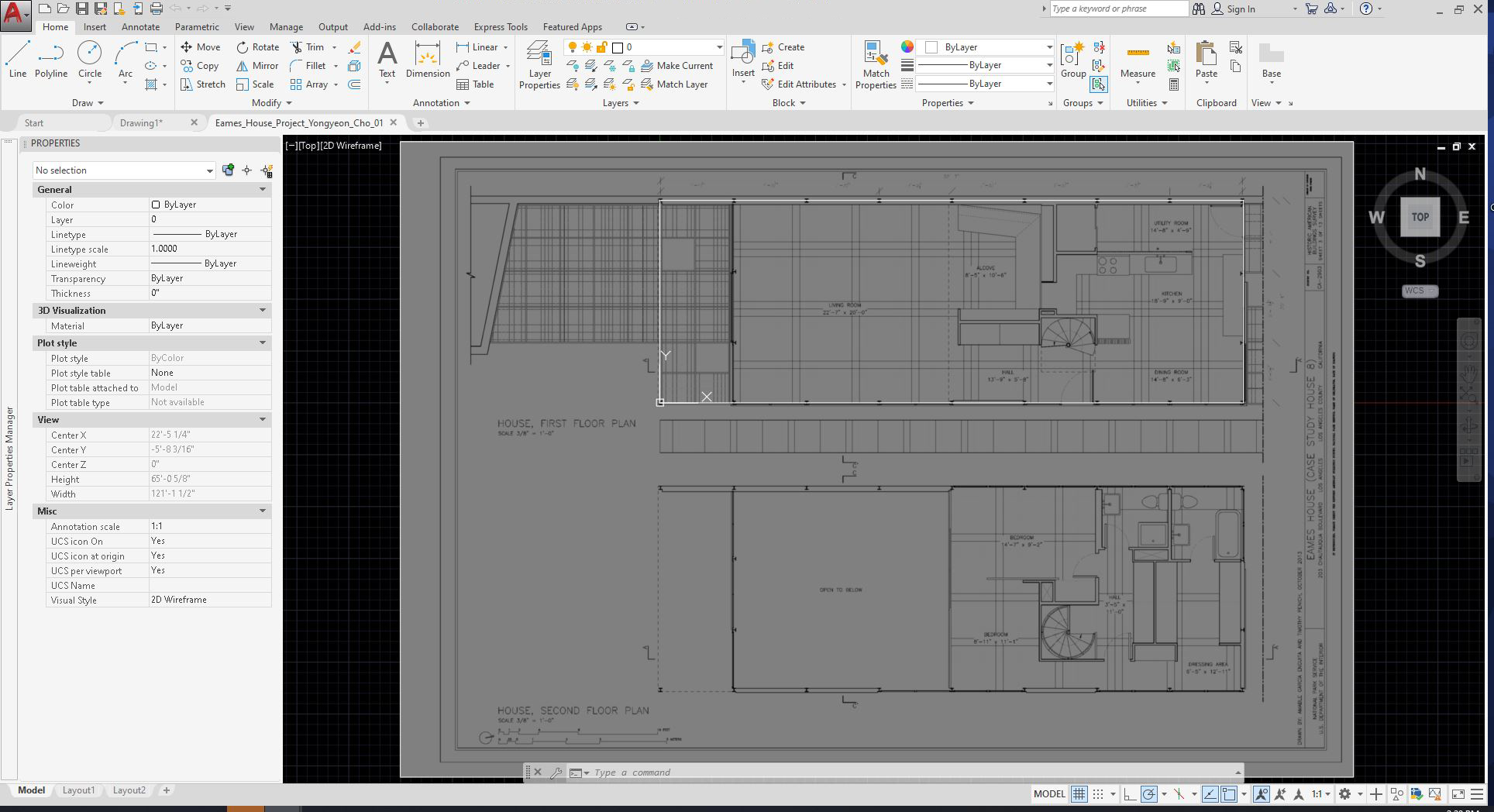
 Lecture Contents
Lecture Contents
(CO1) Understand what is the application & iv different AutoCAD
Virtually CAD
Estimator-Aided Design(CAD) or Computer-Aided Design and Drafting (CADD) tin can be defined as using computer systems to assist in the cosmos, modification, assay, or optimization of a design. (Narayan, 2008)
CAD software is used to increment the productivity of the designer, better the quality of design, improve communications through documentation, and create a database for manufacturing. (Narayan, 2008)
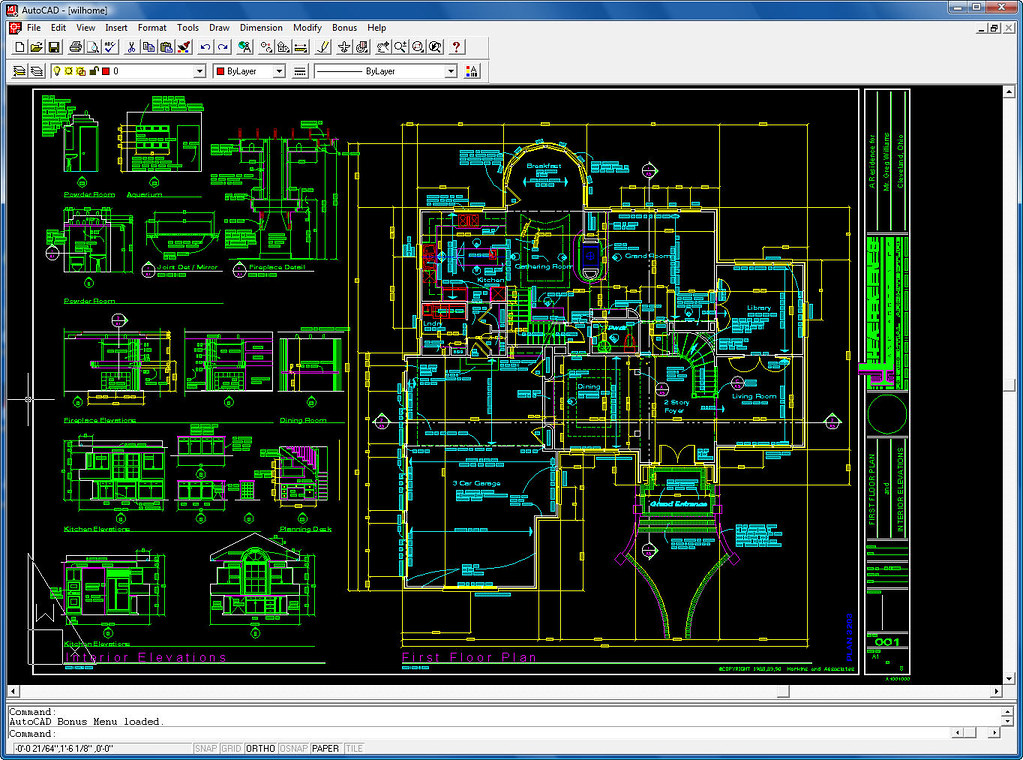
prototype credit: Shaan Hurley, AutoCAD R14 Welcome Sample DWG, Flicker
CAD is an important industrial art extensively used in many applications, including automotive, shipbuilding, and aerospace industries, industrial and architectural design, prosthetics, and many more. (Pottmann, and et al., 2007)
Nigh AutoCAD
AutoCAD is an manufacture-leading commercial CAD software.
AutoCAD is used by AEC(Compages, Engineer, and Construction) to generate and optimize 2D and 3D designs. AutoCAD is a widely used software program that can assistance you typhoon structure documentation, explore design ideas, visualize concepts through photorealistic renderings, and simulate how a design performs in the existent earth. (Autodesk)
AutoCAD was first released in December 1982 as a desktop app. In 2010, AutoCAD was released as a mobile- and spider web app, marketed as AutoCAD 360. (Autodesk and AutoCAD)
Four AutoCAD products for AEC
- AutoCAD: the original version of AutoCAD. This version tin use architects, project managers, engineers, graphic designers, city planners, and other professionals.
- AutoCAD Architecture: a version of Autodesk's flagship production, AutoCAD, with tools and functions especially suited to architecture work. This software supports dynamic elements (wall, door, windows, and other architectural elements) and automatically updating Spaces and Areas for calculations of sqft.
- AutoCAD LT: the lower-cost version of AutoCAD, with reduced capabilities (No 3D, No Network Licensing, No management tools, and more).
- AutoCAD 360: an business relationship-based mobile and web application enabling registered users to view, edit, and share AutoCAD files via a mobile device and web using a express AutoCAD feature set and using cloud-stored cartoon files.
(CO2) How to install the application
Install AutoCAD
This version is for educational purposes simply.
Y'all must know your organization requirement outset before you lot install the application. If you do not know your system apply, please find the data here.
- [STEP 01] Go to https://www.autodesk.com/education/free-software/autocad on your Windows side, open up a web browser (Chrome is recommended because the instructor tested).
- [Step 02] Click [CREATE ACCOUNT] if you practice not have one. If y'all already have an Autodesk account, please sign in by clicking [SIGN IN].
- [STEP 03] Select an advisable version of AutoCAD, your system, and linguistic communication.
- [STEP 04] Click [INSTALL].
- [Stride 05] Have the license and services agreement.
- [Step 06] You will receive an email from Autodesk for the license information (Product key and Serial Number). It will be needed for the activation process.
- [Stride 07] Click the downloaded installation file to install. The installation will accept a while.
- [STEP 08] After installation, the software will crave activation. Please use the license information.
(CO3) Understand AutoCAD interface – Ribbon, Panels, Model space, Layout tabs, Status bar, & Properties
Once you open AutoCAD by double-clicking the AutoCAD icon, y'all can create a new drawing by clicking the [Offset Drawing] icon on the first folio of the AutoCAD application.
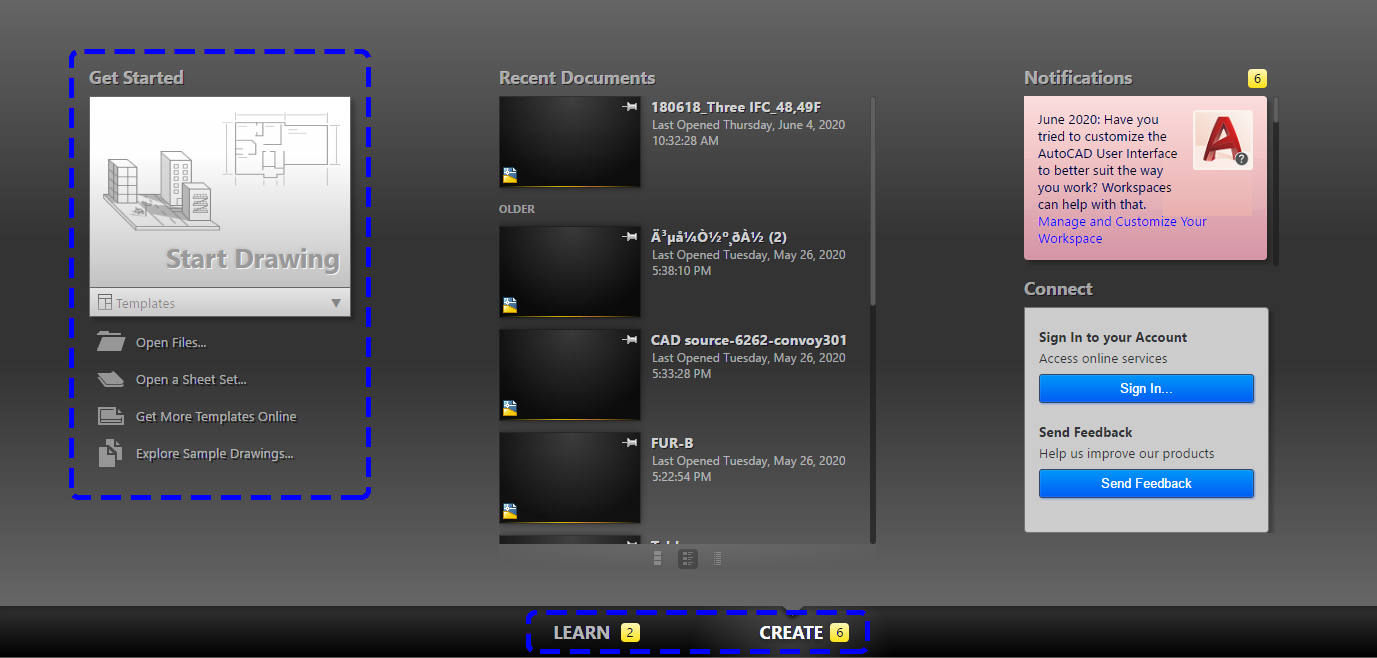
You also tin can select a dissimilar template by clicking [TEMPLATES] under start drawing. The default setting is [acad.dwt]
Your recent documents will prove in the middle of the first page. You also tin click to open up the recent documents.
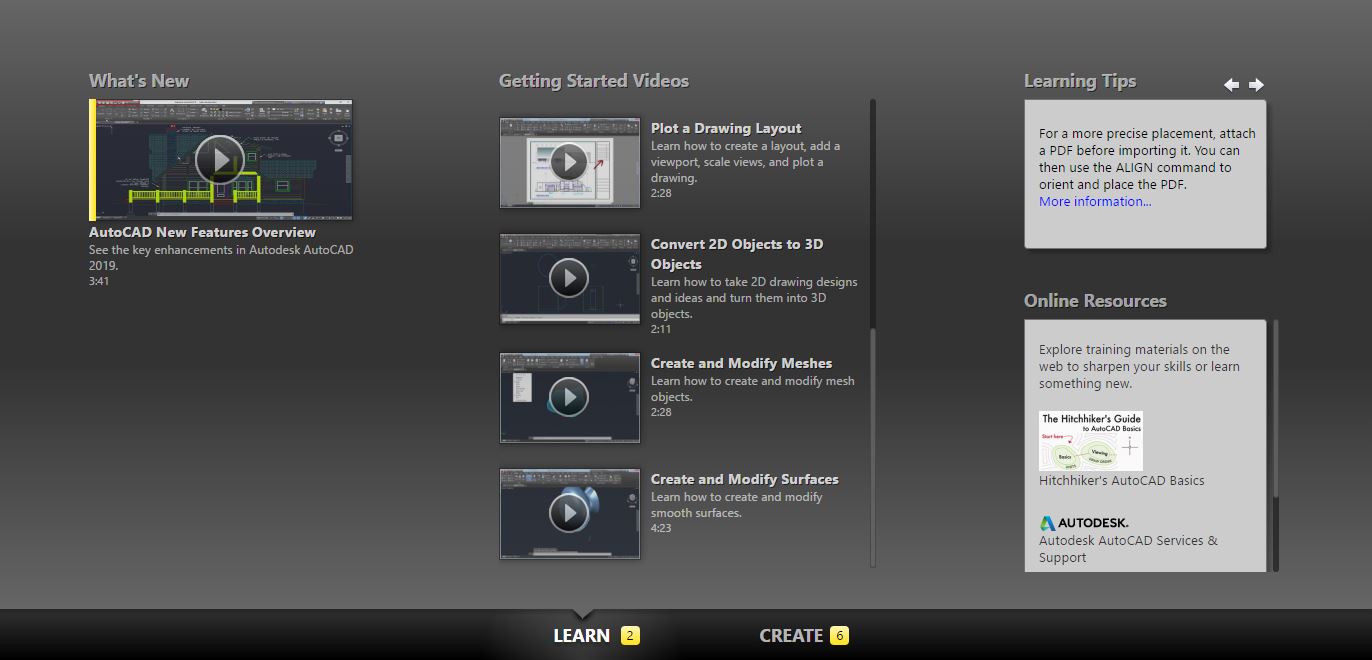
For the tutorial provided past Autodesk, you tin can click [LEARN]. I recommend you watch the Getting Started Videos.
Once you lot click [Beginning DRAWING], yous will see this user interface below. [please think the names]
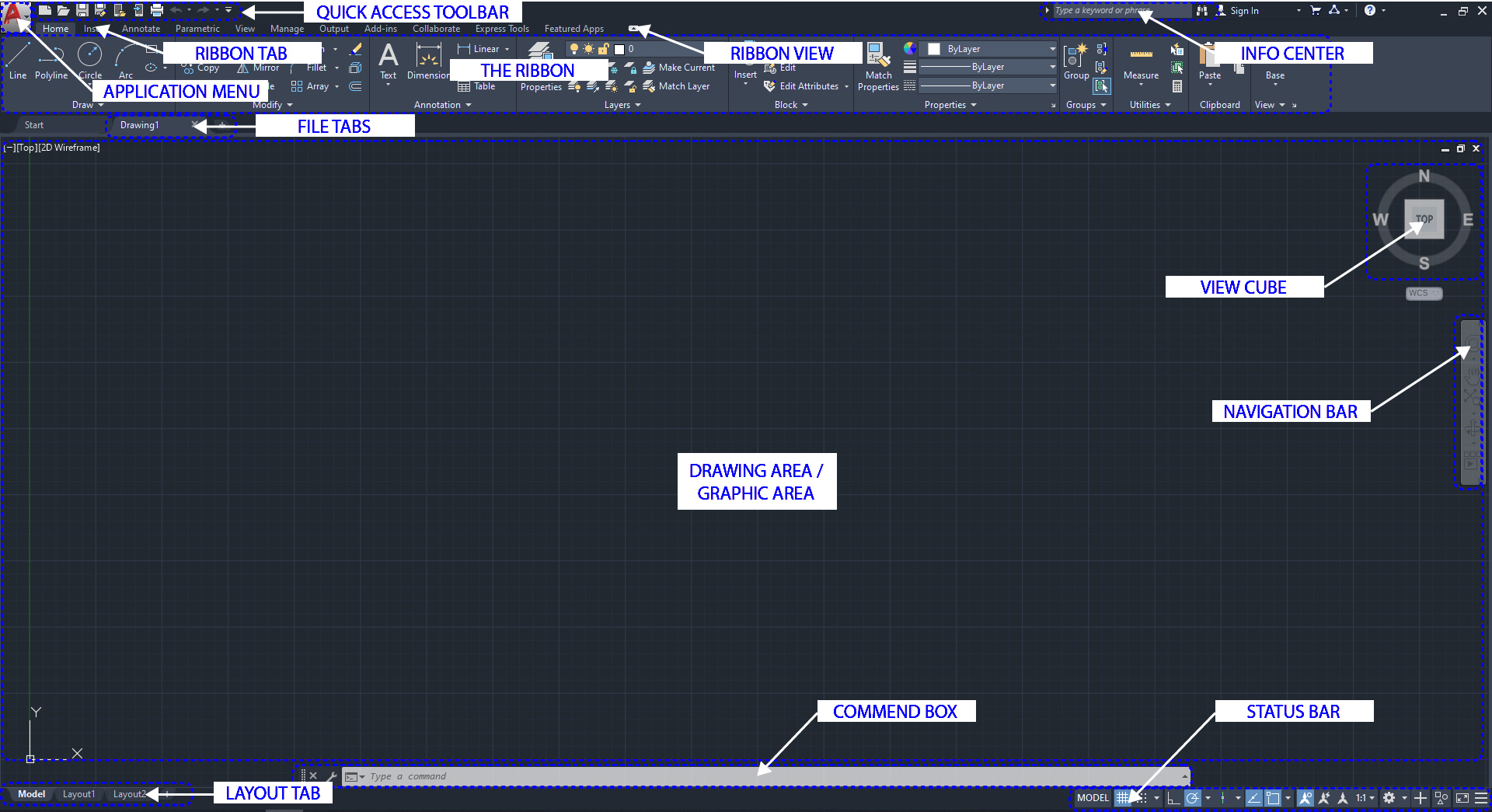
- Application menu: New, open up, salvage, import, export, print
- Quick admission toolbar: User can relieve tools that they oftentimes use
- Info Heart: Ask a question, find out answers from Autodesk community
- Ribbon: Main menus – Home, Insert, Annotate, View, Manage
- Ribbon tab
- Ribbon view: User can minimize and maximize the ribbon
- File tab: Navigate files and create and open up files
- Drawing area/graphic area: Main drawing space
- View cube: User tin change the view, top, front, 3D, or more
- Navigation bar: Zoom in and out, pan, zoon to all, and more
- Command box: Can type commands and see the previous commands
- Layout tab: Tin can see model space and impress spaces
- Status bar: Can gear up grid, snaps, scales, and more
Please see this detailed user interface that is provided by Autodesk
(CO4) AutoCAD setup tips – Options, Unites, Workspace
Before yous start your drafting, it is recommended to set your workspace and options every bit you wish. Accept some time and experiment with the settings, as shown below. You lot can change settings at any fourth dimension.
Beneath are the instructor'due south recommended setups based on more 10-years of drafting experience.
OPTIONS
- [Stride 01] Click [APPLICATION Bill of fare] and then Click [OPTIONS], or type [options] on the control box, and Enter fundamental
- [Pace 02] You will see the Option window
- [Stride 03] Click Display tab > Change Color theme from dark to light
- [STEP 04] Find Crosshair size on the Brandish tab > Change the value from v to 100
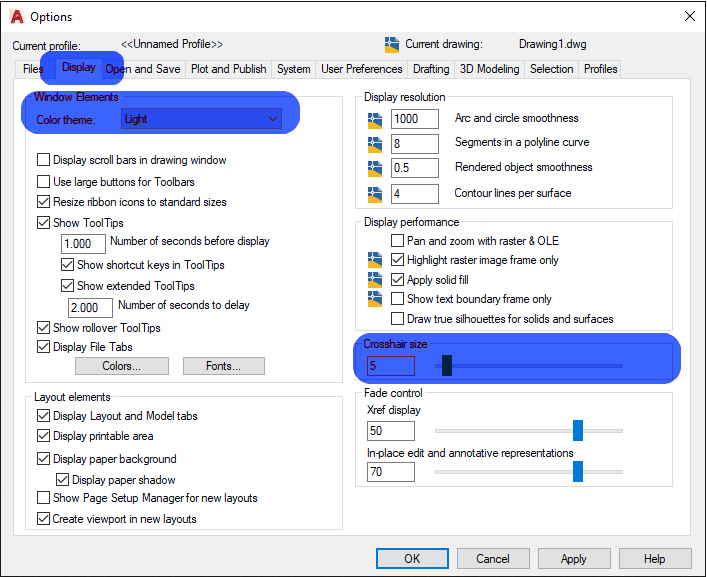
- [STEP 05] Detect [Colors] and change Uniform background to Black> Click [Apply & Close]
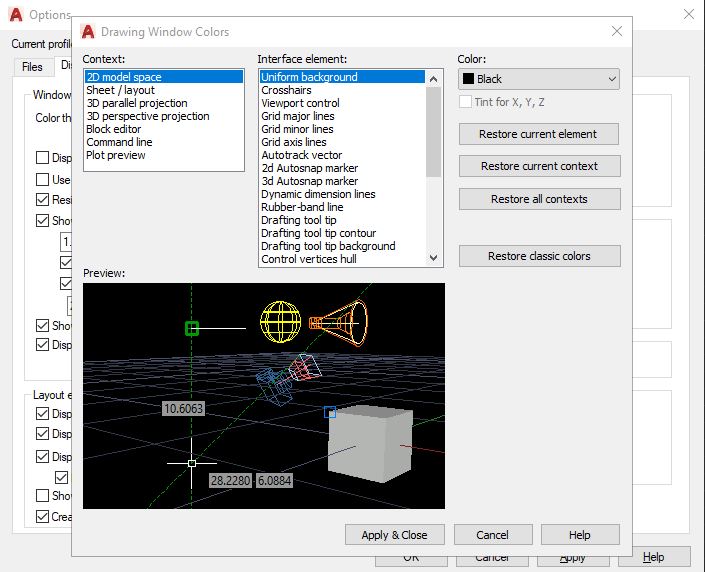
- [Pace 06] Click the Draftingtab > Change the discontinuity size – make slightly smaller
- [STEP 07] Click the Pick tab and uncheck[let the press and drag for lasso] > Click [OK] to close the option
![Option selection setting - It shows an additional setting for selecting strategy. Uncheck [Allow press and drag for lasso]](https://iastate.pressbooks.pub/app/uploads/sites/50/2020/09/01_03_06_Option_Selection_01-1.jpg)
UNITS
- [STEP 01] Click [APPLICATION MENU] > click [Drawing UNITS] > click [UNITS] or, Type [units] on the command box > Enter key
- [STEP 02] Confirm the units are right for your project
Below snap is an image of a typical setting for the Regal system.

Below snap is an image of a typical setting for the Metric system.
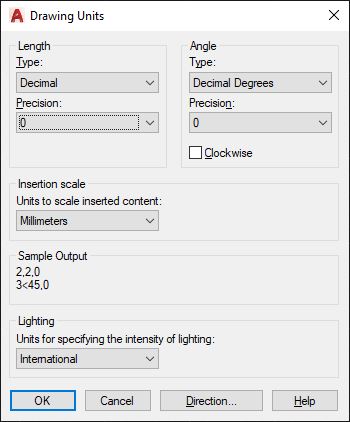
Backdrop
- [STEP 01] Click the small arrow under Properties on Home Ribbon to open the Properties panel
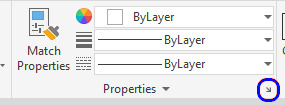
- [Stride 02] Or press [Ctrl+1] on your keyboard to open the Properties panel
- [Pace 03] Place the panel on your left side of the workspace
- [STEP 04] Click [Layer Properties] on Habitation Ribbon to open up Layer properties

- [Step 05] Place the console on your left side of the workspace and click the arrow to hide the panel

The interface after setting changes
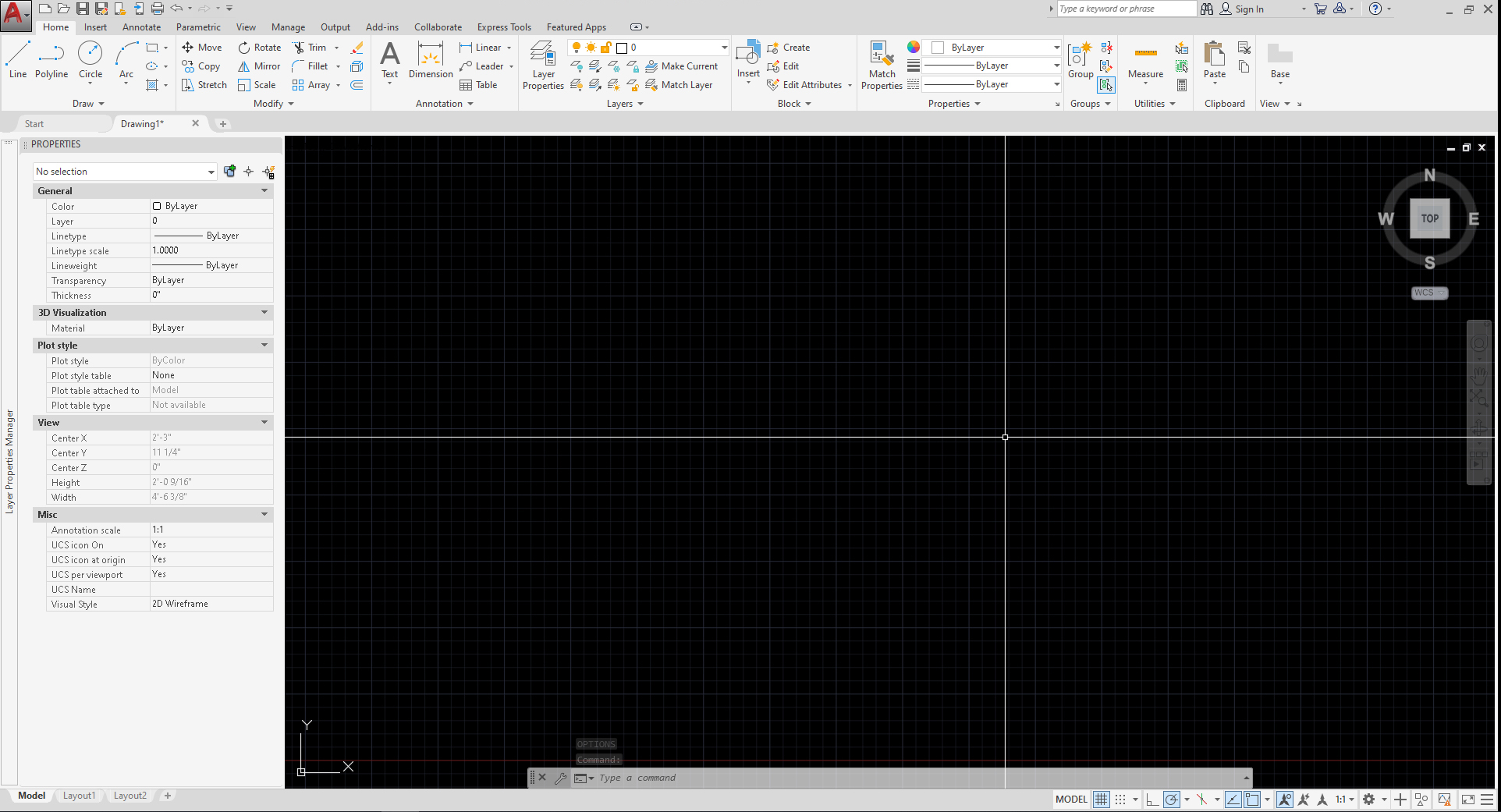
(CO5) Types and structure of drawings in Motorcar CAD- Floor programme, RCP, Tiptop, Section, & Details
Architects and Designers use AutoCAD in slightly dissimilar means. It is unlike from business firm to firm and depending on who draws the drawing. Moreover, it depends on what phase of the design you are in.
Many design firms never utilize layout tabs. Some firms use AutoCAD only for Schematic Blueprint purposes. Some designers apply this application for presentation purposes too.
Nonetheless, in this course, we are targeting to employ all essential functions to generate a Construction Document set up.
Below is a typical – fundamental – Construction Document gear up for an interior design projection
- Embrace canvass + general project data
- Floor plans
- Furniture + Finish plans
- Ceiling plans
- Elevations + Sections
- Details
For detailed data about the types of drawings, please refer
Kilmer, W. Otie, and Kilmer, Rosemary. Structure Drawings and Details / W. Otie Kilmer and Rosemary Kilmer. Third ed. 2016. Print.
(CO6) Input commands and empathize different selections
To draw in AutoCAD, you must understand different types of command input
- Use icons on Ribbon (Bones level)
e.g. Click [Domicile] ribbon > Click [Text] - Use the commands box (Moderate level)
e.m. Click [control box] > Blazon MULTILINETEXT > Enter primal - Use Shortcuts (Advanced level) – Delight practice to amend the speed of work and productivity.
due east.k., Type [MT] on a keyboard (mouse can be located anywhere, it tin exist lower case) > Enter
Often use shortcuts by the teacher [please call back the listing of shortcuts]
- [l] – line
- [pl] – polyline
- [mt] – multiline text
- [thousand] – move
- [co] – copy
- [ro] – rotate
- [z] – zoom and [a] – all
- [b] – block
- [s] – stretch
- [x] – explode
- [ex] – extend
- [c] – circle
- [re] – regen (refresh)
- [h] – hatch
- [o] – offset
- F3 – osnap
- F8 – ortho
Detailed information can be institute in this link https://www.autodesk.com/shortcuts/autocad
Three types of selections
one click – private objects
- window selection (blue) – drag/click from left-top to right bottom to select all objects that are enclosed in the choice rectangle.
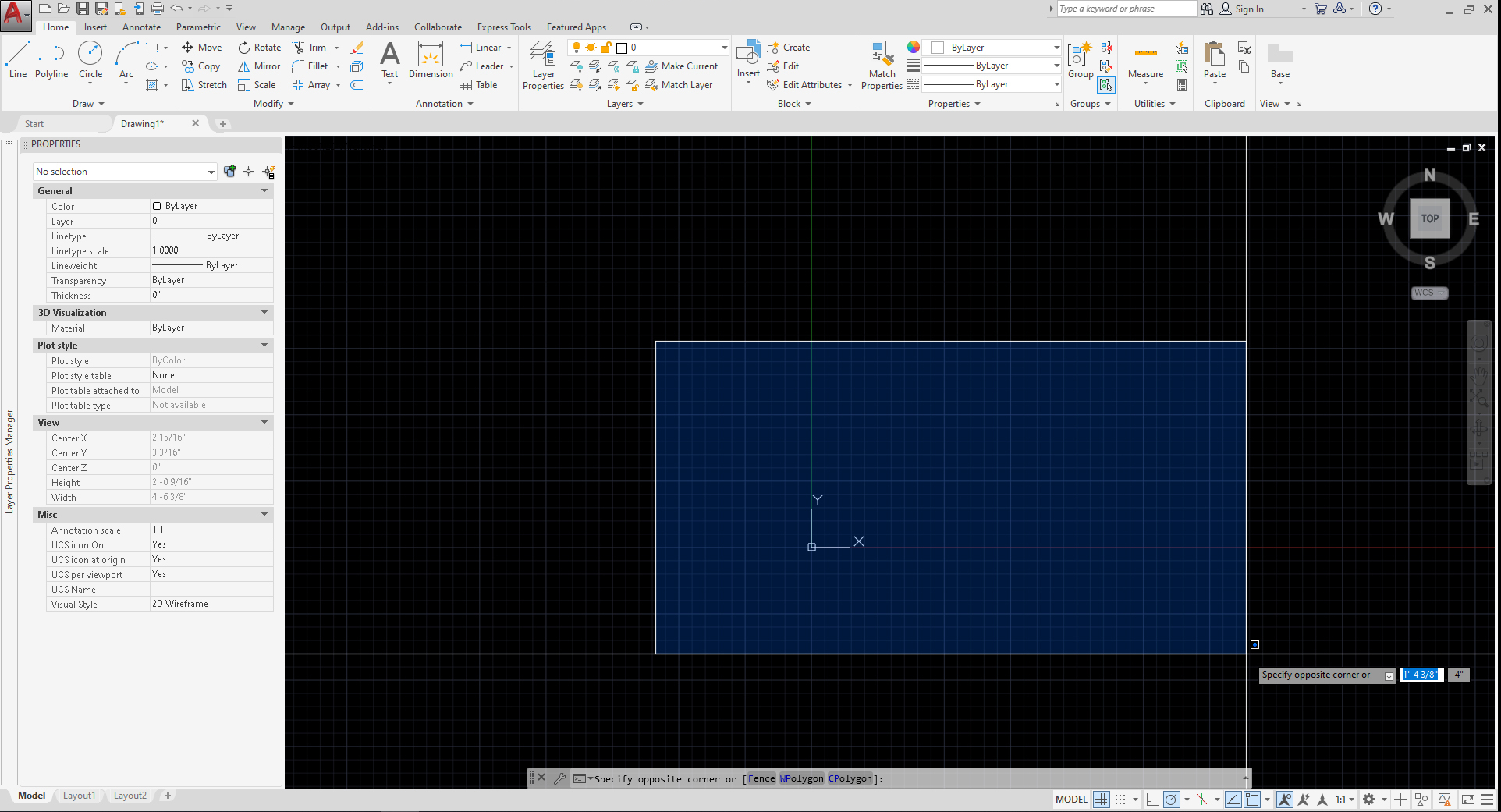
- cross selection (dark-green) – drag/click from right bottom to left to select all objects crossed by the selection rectangle.
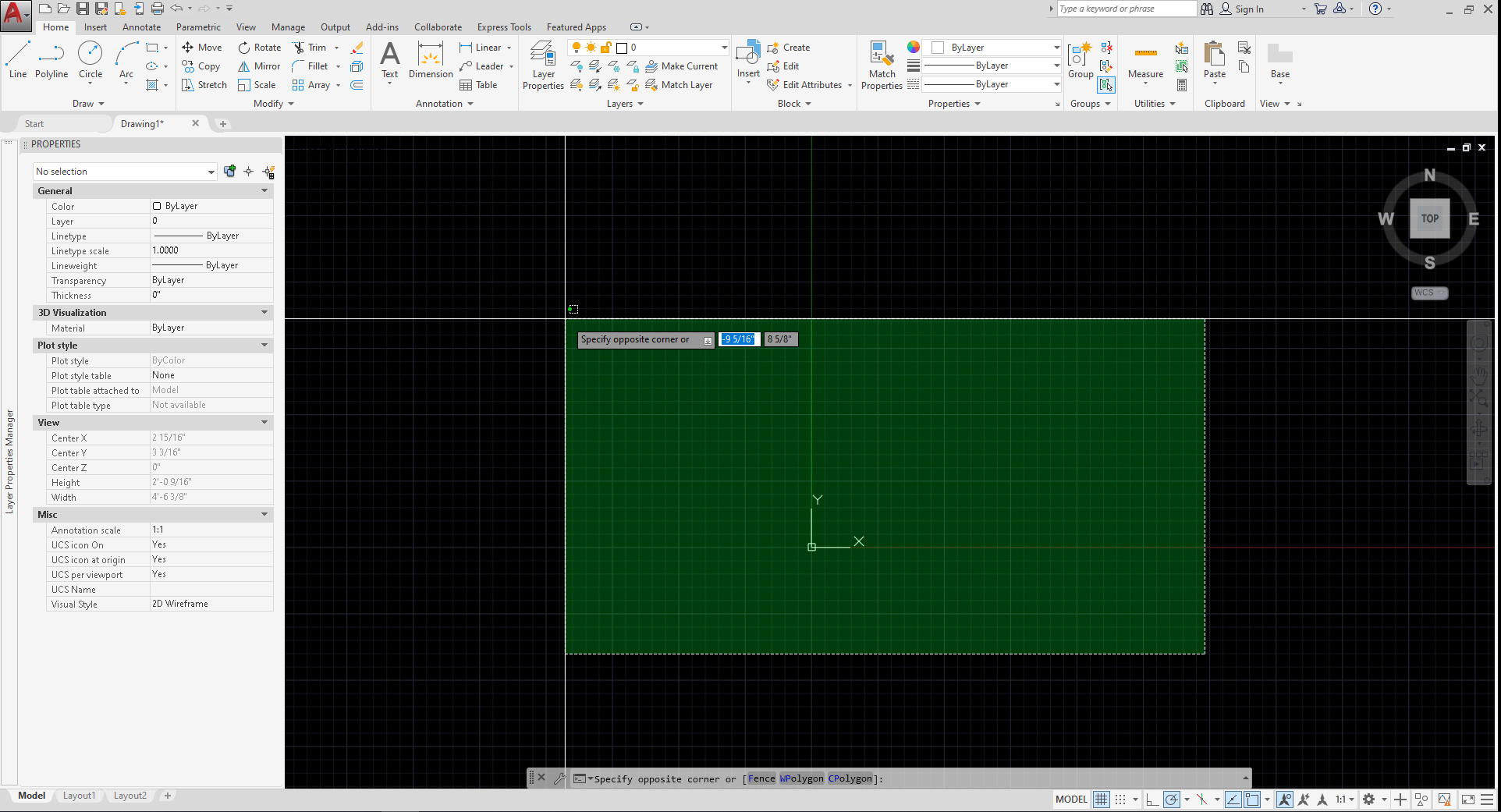
Tip. To select multiple objects, simply click i and another. No need to hold [shift] fundamental or [ctrl]
Refer to this link for select object Information from this link
(CO7) Empathise essential drawing tools- Origin and Rectangle
Understand the "origin" of the drawing
AutoCAD cartoon area is on a real scale, which means the drawing calibration is 1:1 calibration. Moreover, the drawing surface area is unlimited. You tin can draw the entire earth in the drawing. Furthermore, y'all tin draw a small object, likewise. Designers often lose the point/location that they desire to depict in the drawing when you lot depict in a big drawing. Thus, designers use the drawing origin (0,0,0) – ((x,y,z) for a 3D model) every bit the base of operations bespeak of the project. Usually, the origin of the drawing is the left-bottom corner on the first flooring (if it is a 3D model). In AutoCAD, we apply only (0,0) – (x,y).
To start your cartoon, draw a building footprint or property line first.
- [STEP 1] Click [Rectangle] on the Home Ribbon, or blazon [rec] and Enter
- [STEP two] Specify the first betoken, blazon [0,0] and Enter
- [Stride 3] Specify the adjacent bespeak. Any bespeak on the right-top corner volition exist fine. It depends on the project size. For our project, type [58'7″,20'iv″]
- [Pace four] Blazon [z] to zoom and type [a] and Enter

Line (control)
- [STEP 1] blazon [l] and Enter
- [Pace ii] specify the kickoff bespeak by clicking a indicate or typing [ten,y]
- [Pace iii] specify the finish point by clicking a indicate or typing [x,y] – absolute point, blazon [@x,y] – relative point
- Delight refer to this link for the line control
Motion (command)
- [STEP 1] type [one thousand] and Enter
- [Stride ii] select the object/objects that you want to motion and Enter
- [STEP iii] specify the base of operations point
- [Step four] specify the second signal to move the object/objects
- Please refer to this link for the move control
Copy (command)
- [Stride 1] type [co] and Enter
- [STEP ii] select the object/objects that y'all want to copy and Enter
- [STEP 3] specify the base point
- [STEP 4] specify the second point to copy the object/objects
- [Pace 5] specify the third indicate or more to copy the object/objects if you have. If you want to stop, use ESC
- Please refer to this link for the copy command
- Delight exercise Line, Motion, Re-create, and Rotate commands
(CO8) Attach image/PDF/CAD and conform the calibration of the attached file
Download a floor programme image (Eames Firm-Business firm)
From this page, click [Eames_House_Floor_Plan_House.jpg] and mouse correct-click to save the epitome file to your project folder.
Your CAD file and JPG file MUST be in the same folder. Otherwise, you have to relink the file every time or set your link relatively.
Insert the image file.
- [Footstep 1] Click [Insert] on the ribbon tab
- [Pace 2] Click [Attach] on the Reference palette
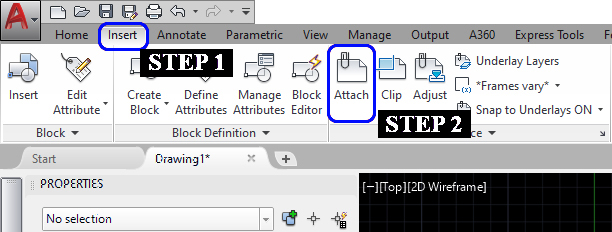
- [STEP 3] Select [Eames_House_Floor_Plan_House.jpg] from your project binder > Click [open]
- [STEP 4] Click [OK] on the Attach Image window

- [STEP 5] Click the origin betoken or type [0,0] and Enter
Adjust scale
- [Pace 1] Specify the scale factor [1] and Enter
- [STEP 2] Select the inserted image > Change the Fade value to [50] or lower that y'all can run across the background
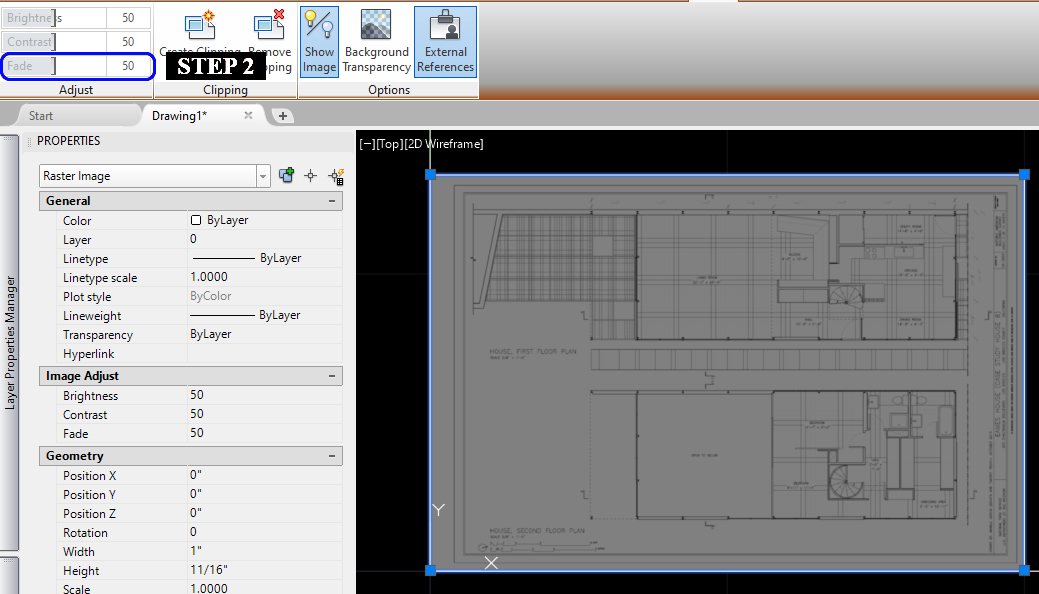
- [Pace 3] Zoom in to the calibration or a known dimension
- [STEP four] Type [SC] and Enter for Scale modify
- [Footstep 5] Click a base betoken > Blazon [r] and Enter > Click the base signal > Click a second bespeak that yous know a dimension (for this depict, you can apply the calibration bar) > Type the known dimension [one′]
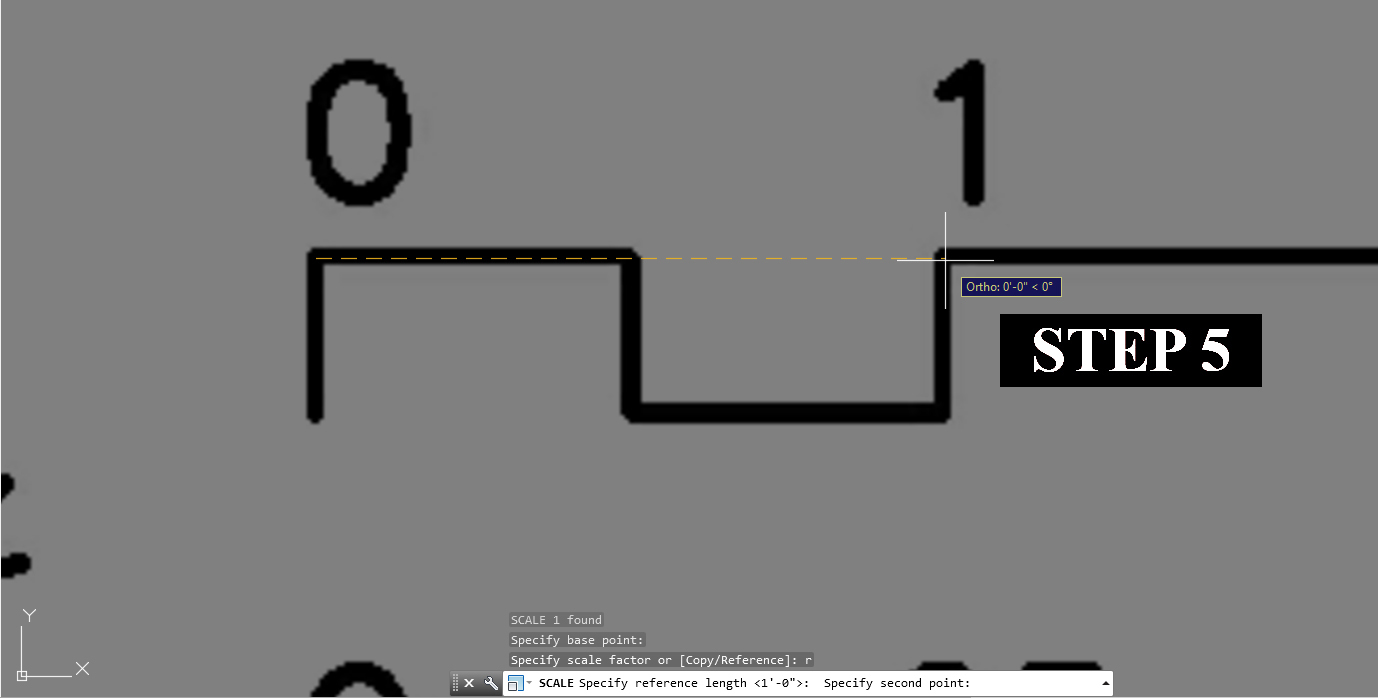
Alter the drawing gild
- [STEP 1] Click the inserted image
- [Step ii] Mouse right-click > Click [Draw Order] > Click [Send to Back]
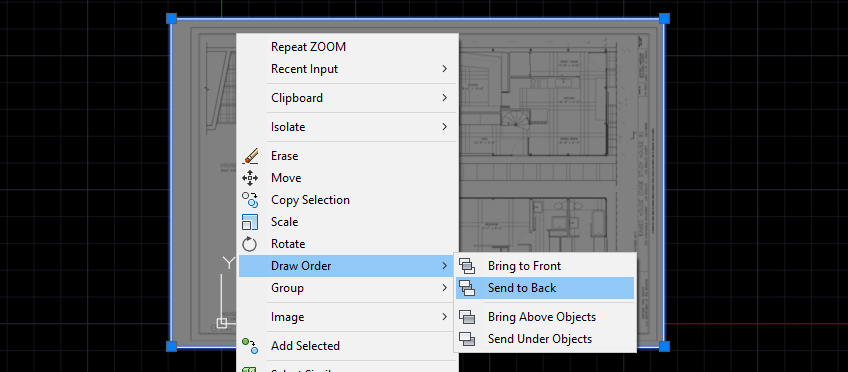
Move the prototype to the building footprint
- [STEP 1] Select the inserted epitome
- [Stride 2] Type [m] to move and Enter
- [Stride three] Click a base point > Click the target point to move
- Tip! Use Object snap [F3] to select the target point from the edifice footprint.
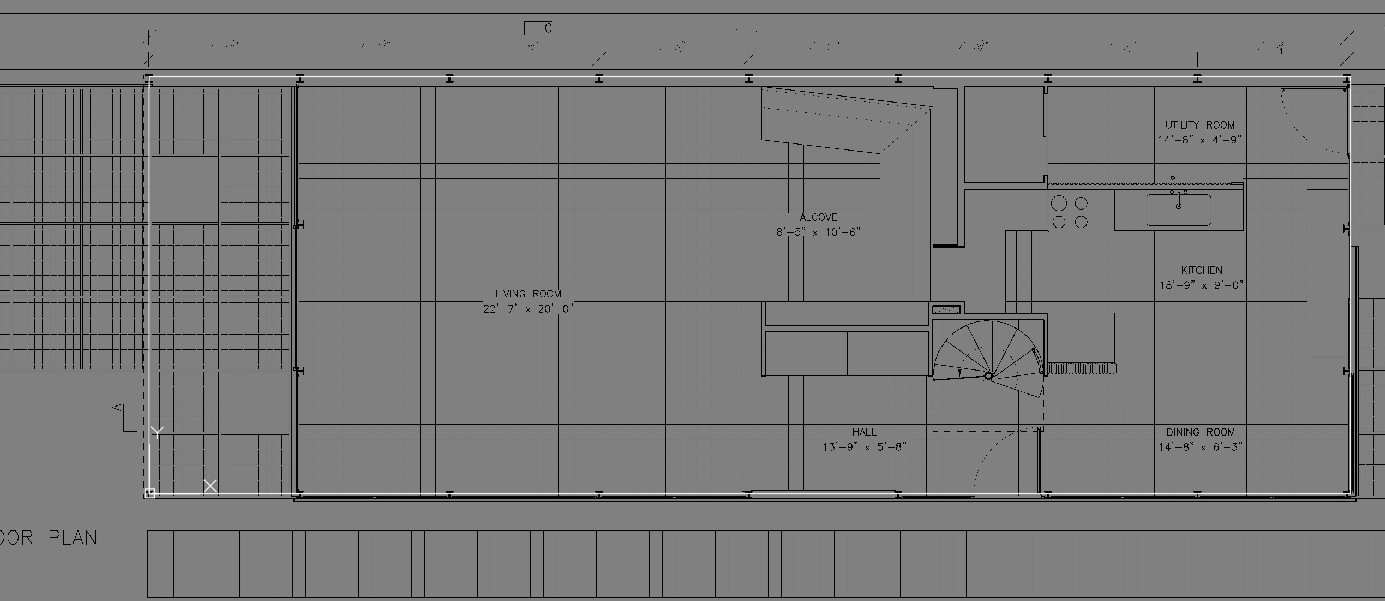
(CO9) Set the project folder, Salvage the file, and backups
Save the file
Information technology is vital to save your file every bit early equally possible. Moreover, save anytime, and the moment you think it is appropriate. I unremarkably save within xv min (at least four times per hour).
- [Step 01] Click [Application bill of fare] > Click [Salvage]
- [Step 02] Select a projection folder on your difficult drive, external hard drive, USB, Dropbox, or Onedrive
- [STEP 03] Recommended file type – AutoCAD 2007/LT2007 Cartoon(*.dwg)
- [STEP 04] Recommended file proper name – Eames_House_Project_Firstname_Lastname_01.dwg
Tip! (.bak) file is a backup file. In the default setting, every 10 minutes, the file will be saved. To use the backup file, alter the file extension (.bak) to (.dwg)
 References
References
Narayan, Thou. Lalit (2008). Computer Aided Design and Manufacturing. New Delhi: Prentice Hall of India. ISBN 978-8120333420.
Pottmann, H.; Brell-Cokcan, Southward. and Wallner, J. (2007) "Discrete surfaces for architectural design" Archived 2009-08-12 at the Wayback Motorcar, pp. 213–234 in Bend and Surface Design, Patrick
Chenin, Tom Lyche and Larry 50. Schumaker (eds.), Nashboro Printing, ISBN 978-0-9728482-seven-5.
"Chapter viii : Autodesk and AutoCAD" (PDF). Cadhistory.net. Retrieved 2020-07-11. http://cadhistory.cyberspace/08%20Autodesk%20and%20AutoCAD.pdf
DOWNLOAD HERE
How to Draw a House Plan in Autocad 2007 Pdf TUTORIAL
Posted by: stephanthase1985.blogspot.com
Comments
Post a Comment